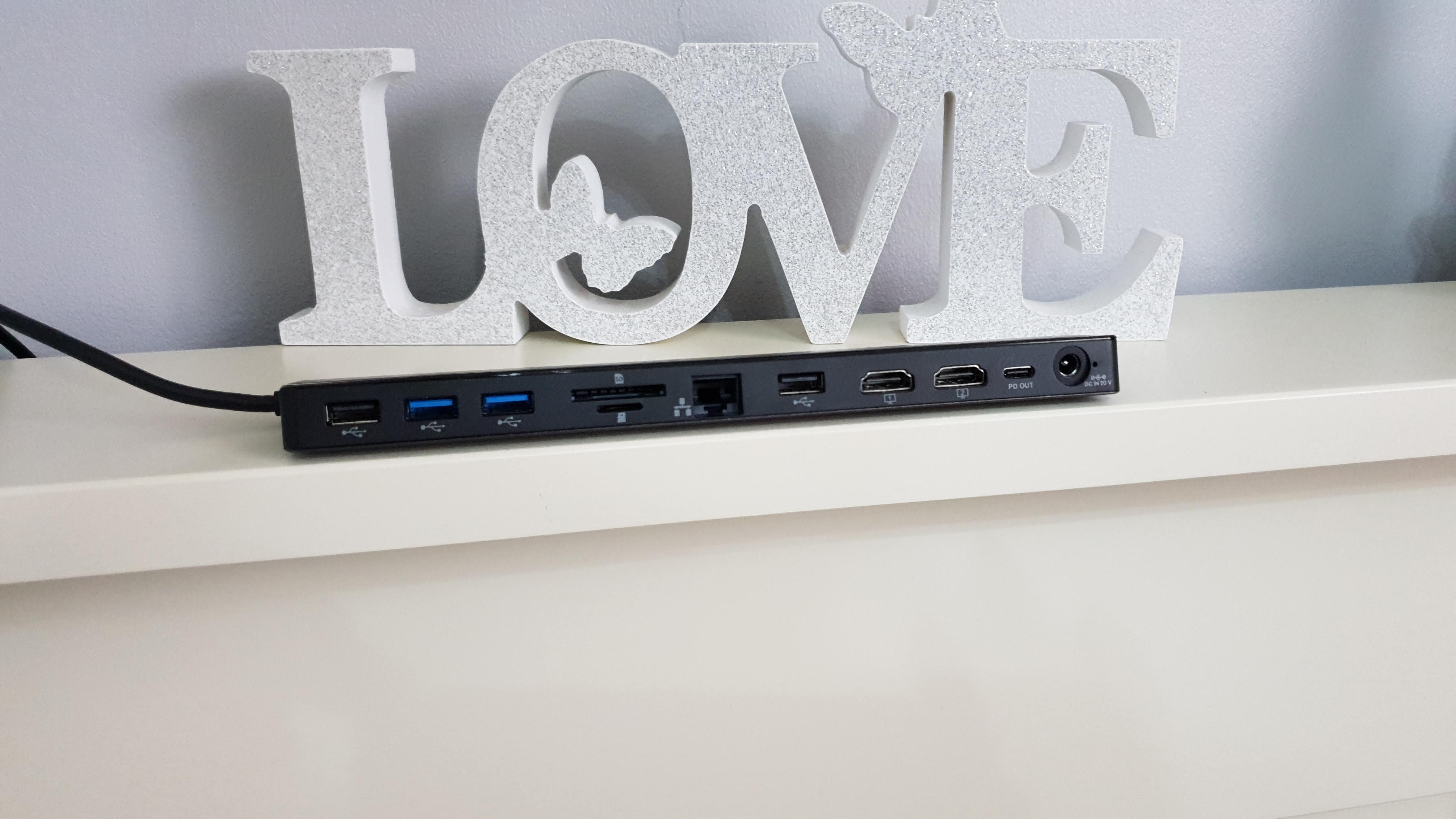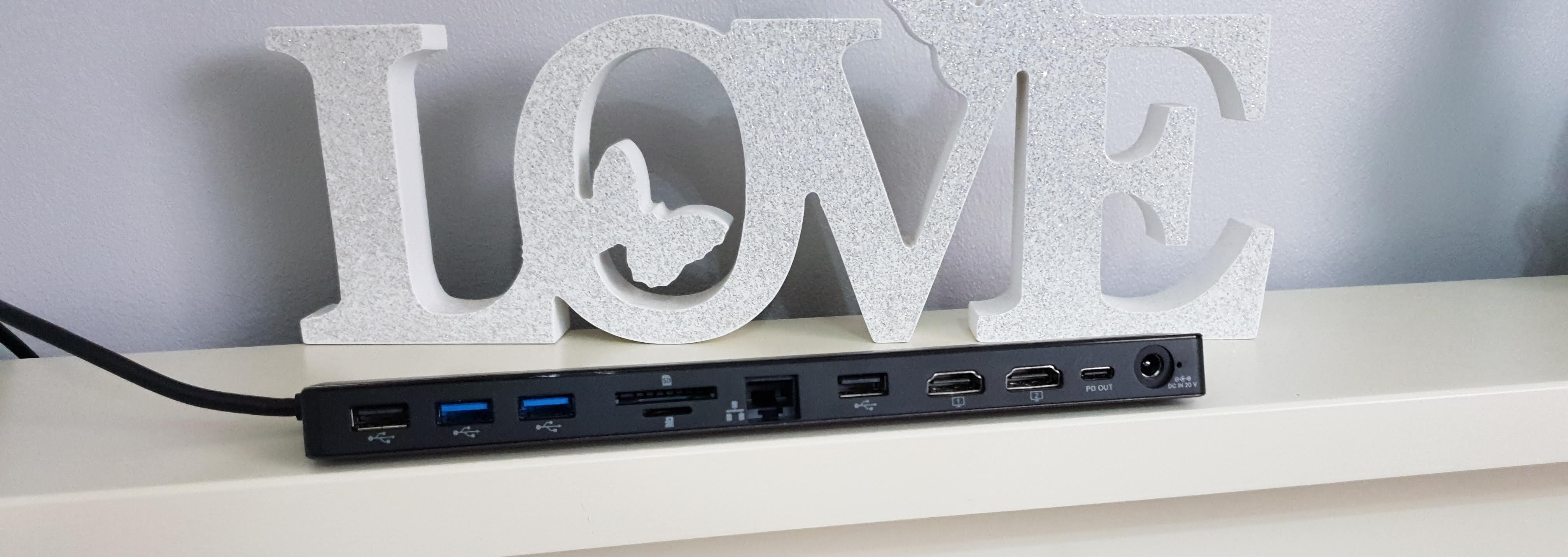TechRadar Verdict
The VAVA VA-DK004 is not too far from being the top dog in the game with cable management being the only real issue we’ve encountered. With a surprisingly competitive price point and plenty of pros, we’re looking forward to the next iteration of this dock.
Pros
- +
Very well built
- +
Surprisingly small
- +
Two card readers
- +
Bundled PSU
- +
Very affordable
- +
Samsung DEX compatible
Cons
- -
Not enough USB ports
- -
USB cable not long enough
- -
USB 2.0 ports are an oddity
Why you can trust TechRadar
There was a time, not so long ago, where desktop computers ruled the world and working from home was unheard of, well unless your household happened to be your sole place of business. Ubiquitous fast broadband, the coming of age of services like VPN and Endpoint Protection as well as changing work habits have shifted the paradigm to a world where mobile-first and HO-first (Home Office) has become the norm.
With that in mind, it is not surprising to see that a number of peripheral and accessory manufacturers have lined up a plethora of products to service the needs of the armada of employees that are now working from home. VAVA, a subsidiary of Ravpower, unleashed the VA-DK004 recently. This is a Type-C docking station with 12 ports/connectors/slots that has some good and bad surprises in store for us.
Price
The VAVA 12-in-1 Dual 4K VA-DK004 docking station costs $79.99 on Amazon after a $20 instant voucher at the time of writing.

Design
The size of the VA-DK004 is what surprises first; we’d expect it to be far bigger but that’s not the case. With a footprint of 43 x 228mm for a weight of 147g, it is almost pocketable although you have to factor the brick power supply. Made of metal and plastic, this docking station has a wedge-like shape (15mm at its thickest and 10mm at its thinnest ) which means that it should easily fit under a laptop, slightly elevating its rear - for better cooling - and providing it with extra connectors. Speaking of the latter, there’s 10 of them.

At the rear, from right to left, are a proprietary barrel-type connector that connects to a bundled 96W (20V, 4.8A) power supply unit, one Type-C power delivery (PD) output (up to 18W), two HDMI ports, a USB 2.0 connector, one Gigabit Ethernet port, two USB 3.0 ports and another USB 2.0 port.

On the right of the unit is a 3.5mm headphone jack. There’s also a pair of card readers, SD and microSD, that cannot be used at the same time.
On the left hand side of the docking station is a Type-C cable that plugs into the host laptop/tablet/smartphone and transmits both data and up to 65W power which should be enough for all but the larger, more power hungry laptops. While they will charge at a slower rate, just bear in mind that 65W might prove insufficient under heavy load, causing these laptops to shut down on low battery.
Sign up to the TechRadar Pro newsletter to get all the top news, opinion, features and guidance your business needs to succeed!

In use
The 40cm cable on the docking station was located on the wrong side as we couldn’t easily connect to the laptop’s power port; a removable cable or a longer cable might have solved this problem. We tried the VA-DK004 on a Dell Latitude 7490 which uses a Thunderbolt 3 port (which is also Type-C compatible) and have managed to replace the original Dell Thunderbolt docking station without any perceptible difference; it was seamlessly PnP.
In a statement, VAVA confirmed that only Apple Macbook 2019 laptops (or newer) will support 4K@60Hz resolution on two HDMI ports while other laptops will go down to 4K@30Hz. We have reached out to them to find out why that was the case. Note that the Type-C PD port is for power only and doesn’t do data sadly.

You will also be able to use it without the power adaptor, in which case, it will act as a passive USB hub without the ability to charge the host computer. A welcomed surprise is the fact that it is compatible with DeX, Samsung’s little-known technology that can equip your smartphone (or tablet) with a desktop user interface (see below). Our Note smartphone did flag a “use genuine Samsung DeX station” warning message but bypassing it caused no harm. Instead, we were greeted by the DeX desktop and were able to work in glorious 4K.
The competition
We reviewed a similar docking station - IOgear’s GUD3C05 - in March 2019. It costs more than twice the VAVA VA-DK004 and is larger in size as well. On the other hand, it has more versatile ports (a legacy VGA plus a mini DisplayPort for example) plus all its USB ports are 3.0 types. Is it worth the 100% premium on VAVA’s docking station? Definitely no.
Beyond that particular model, there’s a myriad of other products that tend to share the same design and therefore we’d assume, the same ODM. Mokin ($79.99 at Amazon) is more expensive, doesn’t have a bundled PSU and is thicker but does triple 4K displays, has a DisplayPort and only USB 3.0 ports. The BW-TH9 from Blitzwolf ($49.99 at Banggood) cuts a few corners and drops the PSU but has a groove that supports a tablet and a price that’s extremely competitive.
Final verdict
The VAVA VA-DK004 docking station is one of the better laptop accessories we’ve seen recently. It is well built, very attractively priced and delivers a decent amount of ports. It is well balanced without being spectacular; a Thunderbolt docking station will still be preferable if you transfer large amounts of data regularly and the relatively cable meant that we couldn’t place it underneath the laptop.
We’d love to see faster USB ports although it would probably not be worth it given that the Type-C connector that plugs into the laptop wouldn’t be able to practically provide enough bandwidth for four USB 3.0 ports (that’s 20Gbps in all). The cherry on the cake has to be the fact that it seems to be DeX-compatible, which means that you can plug a relatively recent high-end Samsung smartphone and get a full desktop experience.
- We've also highlighted the best laptop docking stations

Désiré has been musing and writing about technology during a career spanning four decades. He dabbled in website builders and web hosting when DHTML and frames were in vogue and started narrating about the impact of technology on society just before the start of the Y2K hysteria at the turn of the last millennium.
